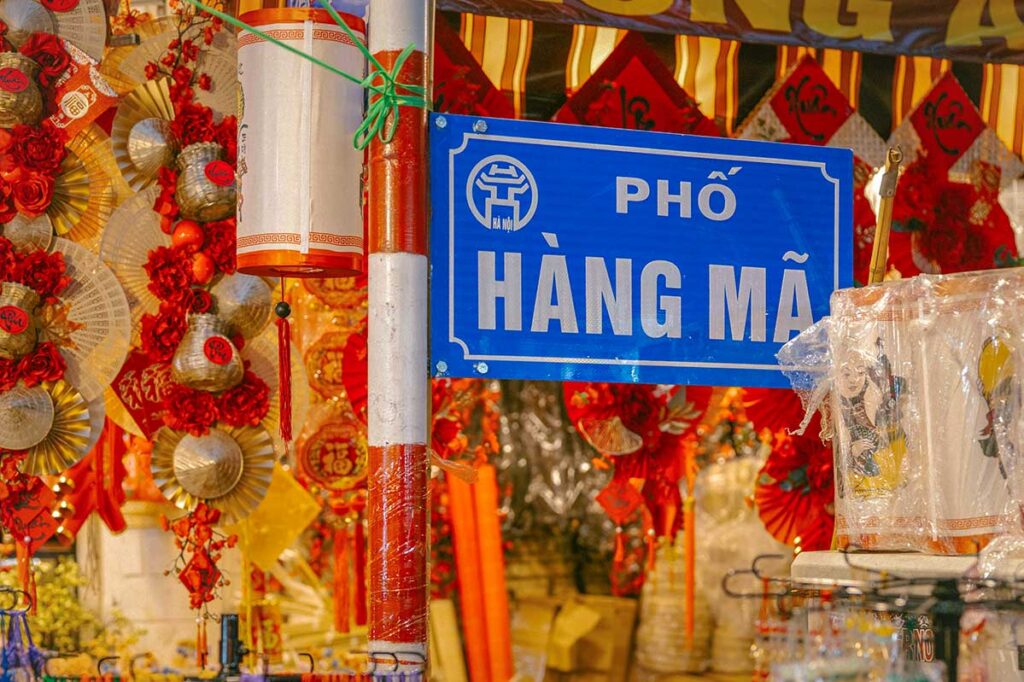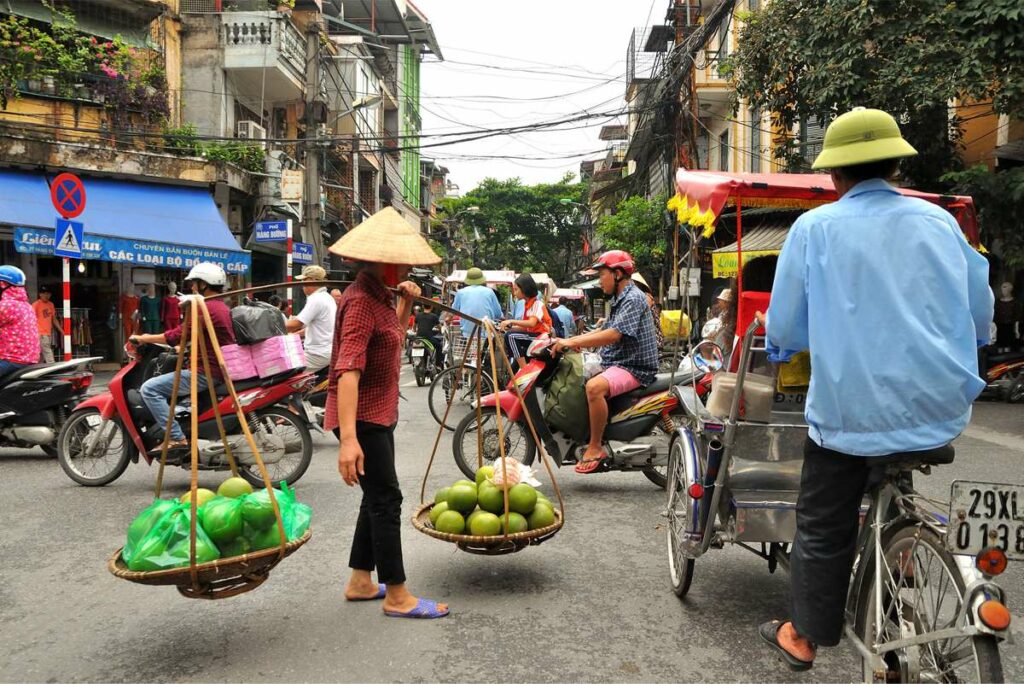What is Hang Ma Street?
Hang Ma Street is a short but lively stretch in Hanoi’s Old Quarter, one of the original 36 guild streets that historically specialized in specific trades. This particular street has long been dedicated to paper goods — especially votive offerings used in ancestor worship — and has expanded over time to include decorations for festivals, toys, and party supplies.
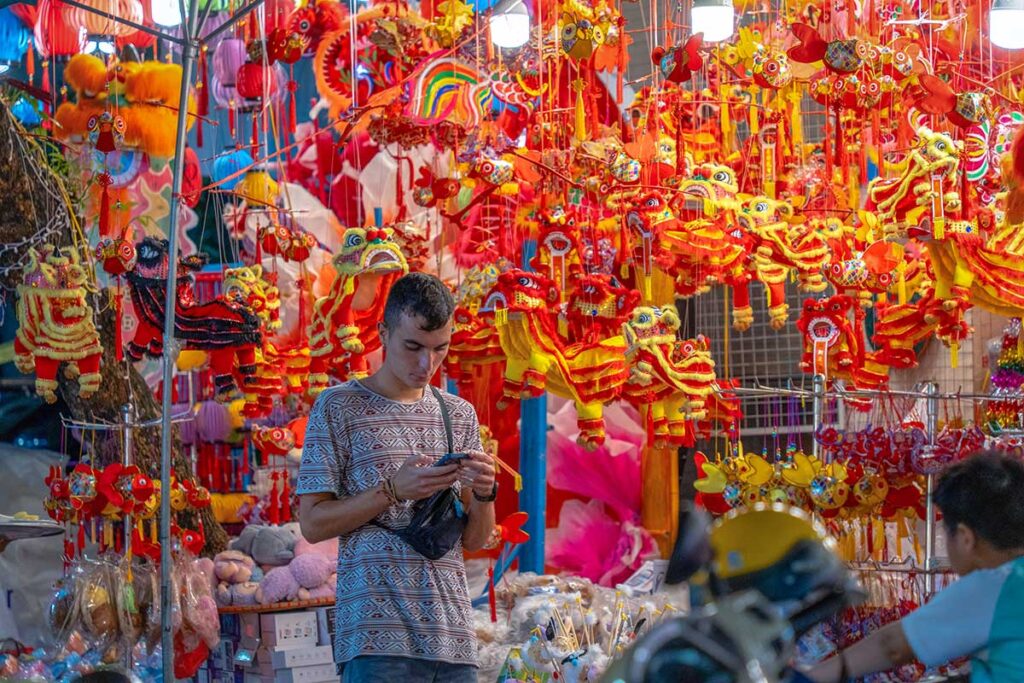
While it operates year-round, the street truly bursts to life in the lead-up to major celebrations like Tet and the Mid-Autumn Festival, when it becomes packed with shoppers and bathed in color. Unlike nearby streets that focus on clothing, tools, or dried goods, Hang Ma stands out for its visual vibrancy, cultural symbolism, and ever-changing festive atmosphere.
History of Hang Ma Street
Hang Ma Street has a history stretching back more than 500 years, making it one of the oldest trading streets in Hanoi. Its name, “Hàng Mã,” refers to paper offerings — symbolic items made of paper and burned as gifts to ancestors in the afterlife. The street’s early traders came from Tan Khai Village, settling here to sell handmade votive paper goods, a practice deeply rooted in Vietnamese spiritual traditions.
During the French colonial period, Hang Ma and nearby Hang Dong Street were collectively known as Rue du Cuivre (Copper Street), though the traditional paper trade continued alongside other commercial activities. Over time, the goods evolved with the times — where once you’d find paper horses, servants, and tools, modern offerings now include paper motorbikes, iPhones, and entire paper villas, all destined for ritual burning. This blend of tradition and adaptation reflects the broader identity of the Old Quarter, where each street still echoes its original craft but adapts to modern needs and customs.
What to see on Hang Ma Street
Architecture & Street atmosphere
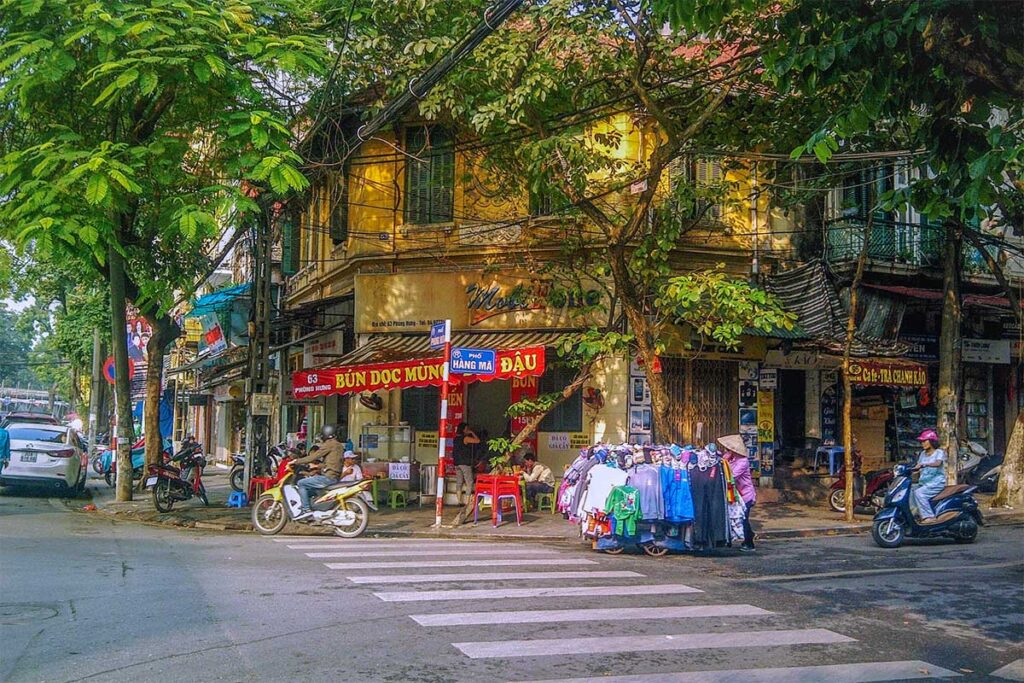
Hang Ma Street is narrow, bustling, and visually striking — a classic example of Old Quarter charm. The buildings lining the street are typical tubular houses: narrow at the front, stretching far back, with multiple functions stacked vertically.
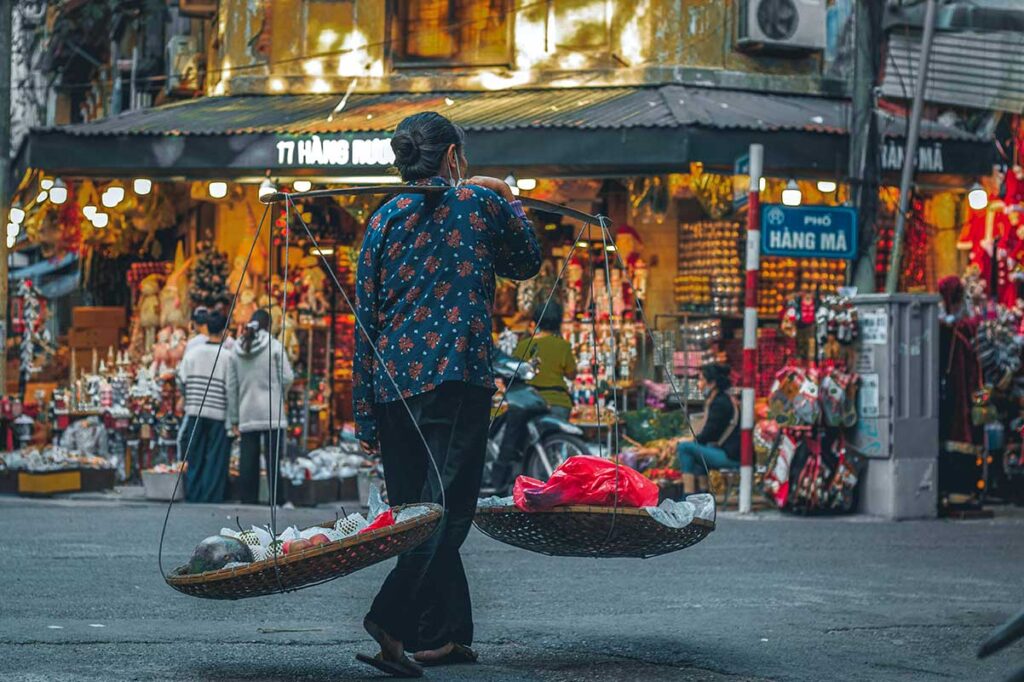
Despite their age, many facades are freshly painted or covered in colorful displays, making the street feel lively and chaotic in the best way. Shops spill out onto the pavement, goods hang from doorways and awnings, and the blend of sights, sounds, and scents makes it a fascinating place for street photography or casual wandering.
Shops and Their offerings
Most shops on Hang Ma sell some form of paper goods. Traditional items include joss paper and elaborate votive objects — from ghost money and credit cards to full-sized paper iPhones, mopeds, and miniature villas — all meant to be burned as offerings to ancestors.
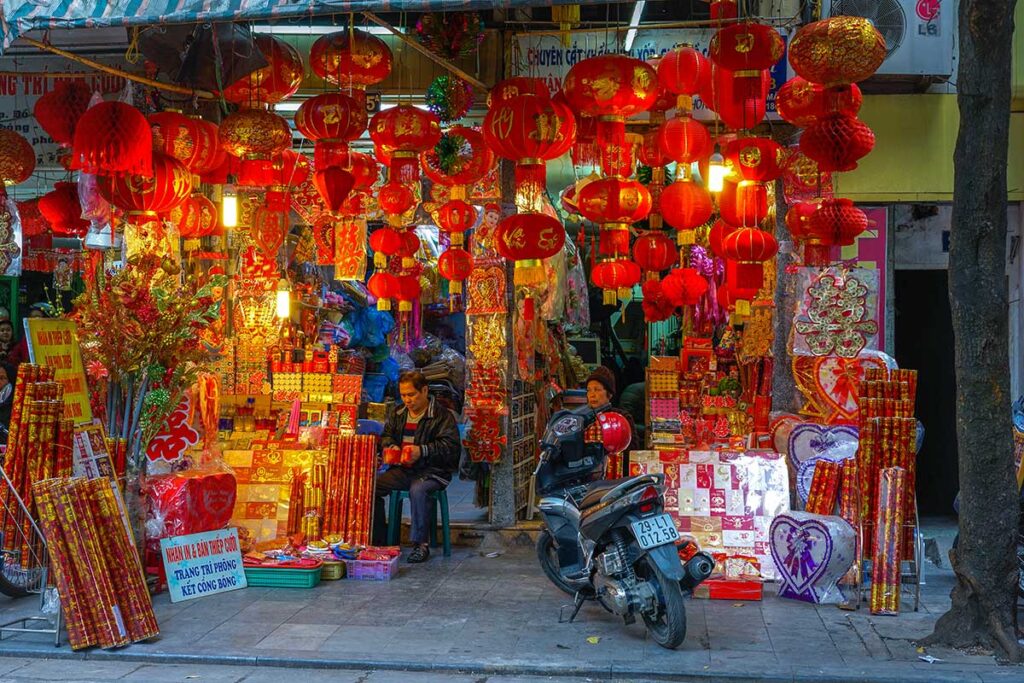
Alongside these, you’ll find shelves packed with toys, paper masks, plastic balloons, confetti, and decorations for events like birthdays and weddings. During certain seasons, the street shifts its focus: Mid-Autumn brings a flood of lanterns and children’s toys, while Tet and Christmas turn it into a riot of red, gold, and flashing lights.
Cultural layer
Much of what you see on Hang Ma is tied to Vietnamese beliefs in ancestor worship and the spirit world. The paper goods aren’t just for show — they’re essential for rituals where families send symbolic gifts to deceased loved ones. While tourists often come for the photos or to browse souvenirs, locals visit with purpose, shopping for ceremonies or celebrations. The contrast between these groups adds an interesting layer: you’ll see a tourist posing in front of a paper dragon next to an elderly woman choosing paper shirts to burn for her husband. It’s a place where tradition and commerce collide, and that’s part of what makes it worth seeing.
Visiting during festivals
Hang Ma Street transforms dramatically with each major celebration, making festival periods the most vibrant — and the most crowded — times to visit.
Tet (Lunar New Year)
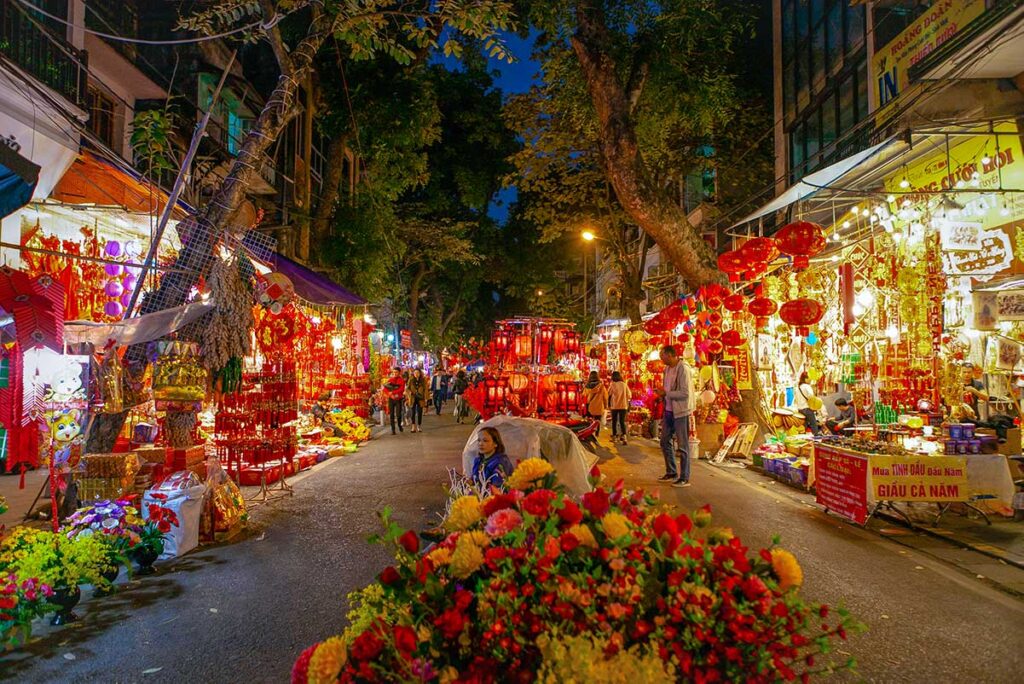
In the weeks leading up to Tet, the street becomes a flood of red and gold. You’ll see lucky banners, calligraphy, hanging ornaments, and stacks of votive paper. It’s visually overwhelming in the best way — but also the busiest time, with wall-to-wall shoppers and little room to move. Read more about: Vietnamese New Year in Hanoi.
Mid-Autumn Festival
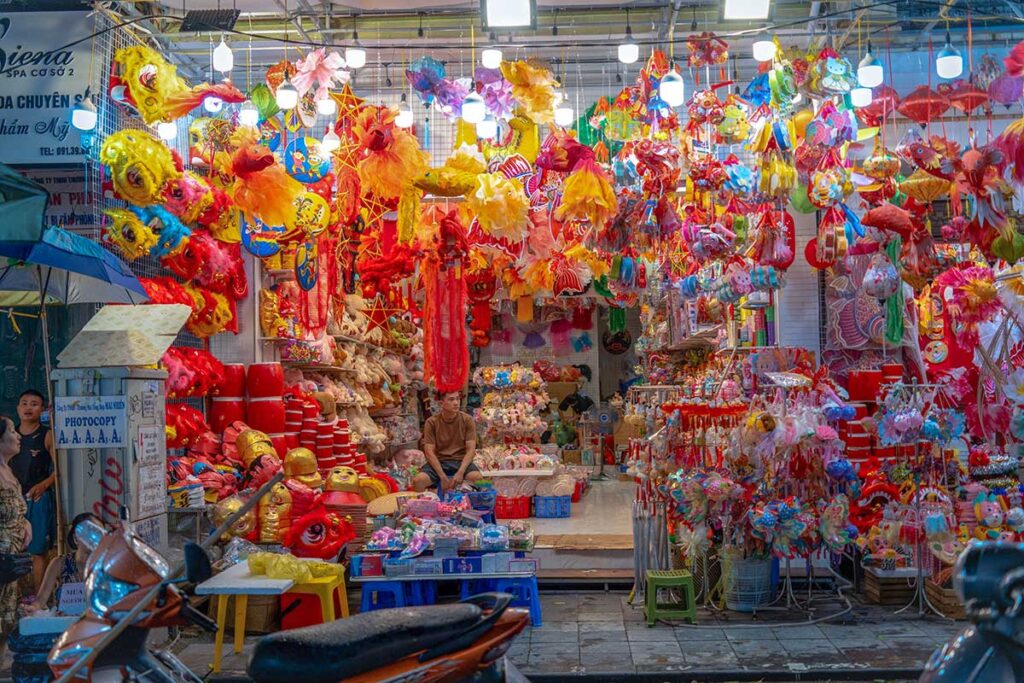
This is when the street really caters to families. Shops fill with star-shaped lanterns, drums, paper masks, and traditional toys. It’s especially lively in the evenings, when children walk the street with glowing lanterns and the whole area feels festive and playful. Read more about: Mid-Autumn Festival in Hanoi.
Halloween
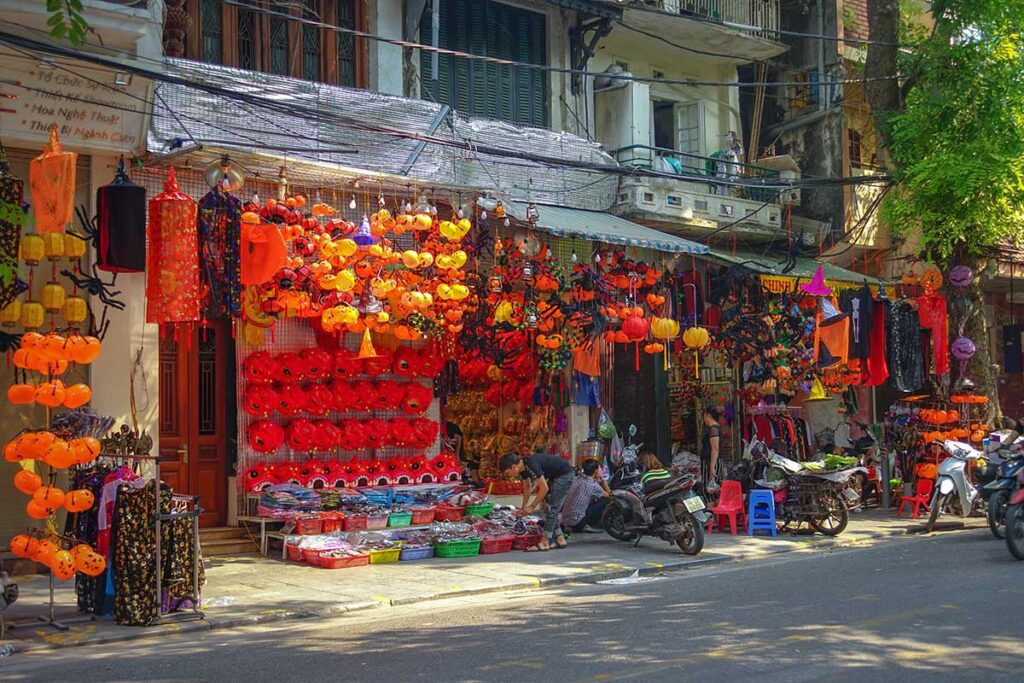
Though not a traditional Vietnamese holiday, Halloween has caught on in recent years. Shops stock spooky decorations, plastic pumpkins, and costumes — popular with young locals and social media-savvy visitors. It’s more of a novelty than a cultural event but adds to the street’s seasonal variety.
Christmas
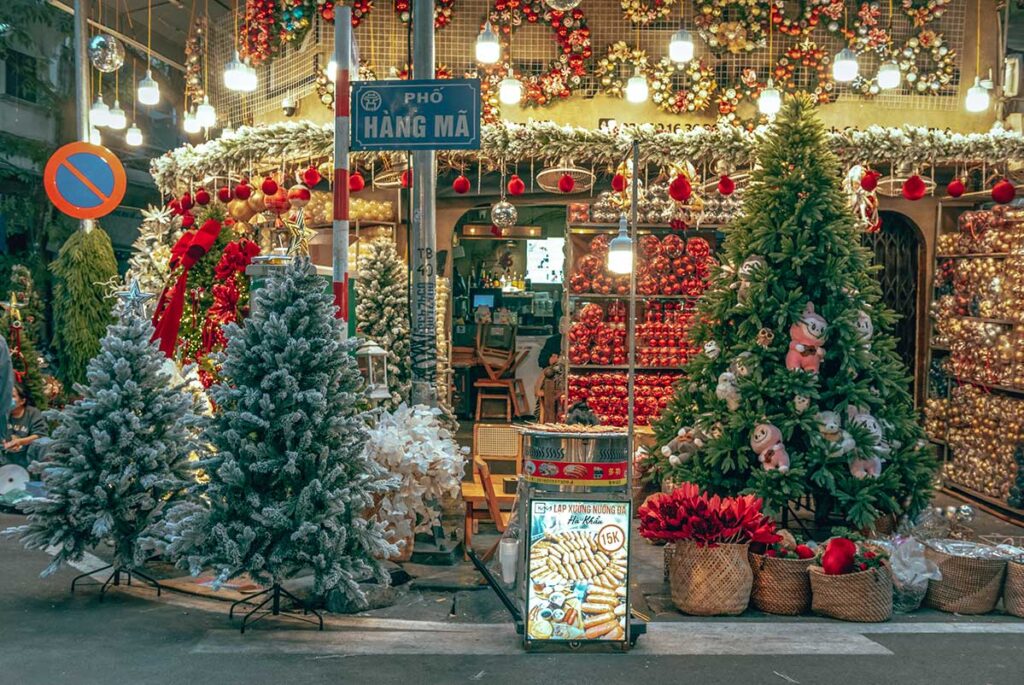
Surprisingly elaborate for a non-traditional holiday, Christmas turns Hang Ma into a winter-themed explosion. There are fake snowflakes, Santa figurines, light-up reindeer, and pine decorations in every direction. It’s a great time to visit if you’re looking for quirky contrasts and colorful chaos. Read more about: Christmas in Hanoi.
Even without a major holiday, Hang Ma Street stays interesting. The decorations are toned down, but shops continue to sell toys, party items, and everyday votive goods for worship.
Tips for visiting Hang Ma Street
How to get there
Hang Ma Street is located in the northern part of Hanoi’s Old Quarter, just a short walk from most central hotels. If you’re already exploring on foot, it’s easy to include it in your walking route. Coming from farther out, you can take a taxi, Grab, or local bus — the closest stops are around Hang Luoc Street or Dong Xuan Market. Be prepared for narrow, crowded streets that aren’t ideal for cars, especially during weekends or festival seasons.
Is it worth visiting if you’re not shopping?
Yes — even if you’re not looking to buy anything, Hang Ma Street is still worth seeing. The colors, seasonal changes, and cultural atmosphere offer a glimpse into Hanoi’s traditions. It’s a short, easy detour from other Old Quarter sights and a great place for photos, especially during Tet or Mid-Autumn Festival.
What’s nearby – Easy to combine
- Dong Xuan Market – major local market next door, great for local snacks and cheap clothes
- Bach Ma Temple – oldest temple in the Old Quarter, quiet and historical
- Ta Hien Street – Hanoi’s backpacker nightlife hub, just a few minutes away
- Hoan Kiem Lake – central Hanoi’s iconic lake and public park
- St. Joseph’s Cathedral – French-colonial church near the edge of the Old Quarter
More ideas? See our full guide to Hanoi’s Old Quarter
If you happen to shop
While most visitors come to Hang Ma just to look, you might spot a decoration, lantern, or seasonal item you want to bring home. If so, keep in mind:
- Bring cash – most shops are cash-only.
- Bargain politely – especially if you’re buying multiple items.
- Compare prices – similar products are often sold a few doors apart.
- Check quality – some decorations are fragile or mass-produced.
No pressure to buy anything — but if something catches your eye, these tips might help.
